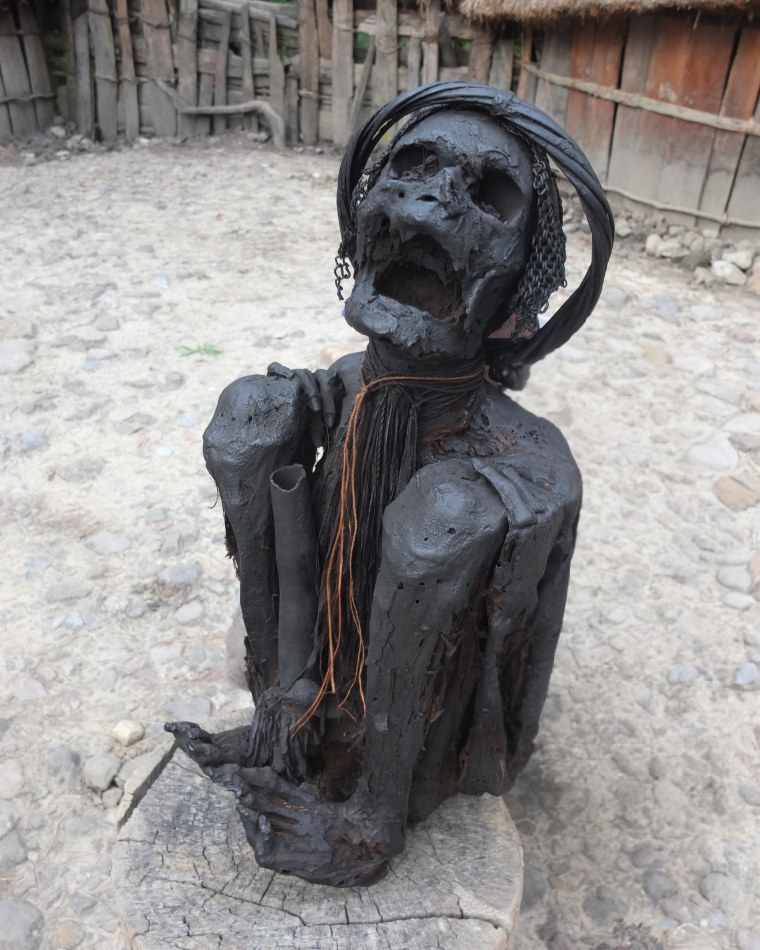-
Tom Brady’s LFG Player of the Game: Commanders RB Jacory Croskey-Merritt 🏆 Week 5 DIGITAL EXCLUSIVE - 14 mins ago
-
Donald Trump’s Osama Bin Laden Comments Raise Eyebrows - 25 mins ago
-
3% Fixed-Rate Loans Announced for Businesses - 37 mins ago
-
How to detect and remove malware from your infected Mac computer safely - 48 mins ago
-
NASCAR Playoff Rankings: Is Denny Hamlin the Driver to Beat Entering Round of 8? - 57 mins ago
-
Major Match Reportedly Planned For WWE Crown Jewel - about 1 hour ago
-
Denise Richards’ ex names Charlie Sheen, Brandi Glanville as divorce witnesses - about 1 hour ago
-
Hamas and Israel set for Trump’s Gaza plan peace talks in Egypt - about 1 hour ago
-
Power Demonstration: Foreign Politicians March at Pécs Pride - about 1 hour ago
-
Tyler Skaggs’ family, Angels face off in civil trial worth millions - 2 hours ago
Scientists say they’ve found the world’s oldest mummies, and they’re far from Egypt
Mummies are most often associated with Egypt, where the oldest ones are about 4,500 years old. But researchers say they have found mummies that are much older, on the other side of the world.
“We found that in southern China and Southeast Asia, there were many archeological sites that contain human burials that are between four and 14,000 years old,” Professor Peter Bellwood, a co-author of the study, told NBC News in a phone interview on Tuesday.
The study, which was published Monday in the journal Proceedings of the National Academy of Sciences, examined 54 pre-Neolithic burials from 11 archaeological sites in southern China and Southeast Asia, with large numbers of samples coming from Vietnam and China’s Guangxi Zhuang Autonomous Region, and smaller numbers coming from the Philippines, Laos, Thailand, Malaysia and Indonesia.
Human remains were found in tightly crouched or squatting postures, often with traces of burning. The researchers said findings confirmed that many of the remains had been smoke-dried over fire for extended periods before burial in a process of mummification.
The remains “belong to an original hunter-gatherer population that occupied Southeast Asia in Paleolithic times, and that continued in occupation in places like Australia and New Guinea through into current times,” said Bellwood, an emeritus professor of archaeology in the School of Archaeology and Anthropology at the Australian National University in Canberra.
Previously, the oldest known mummies had been found not in Egypt but in modern-day Peru and Chile, where they were prepared by a fishing people called the Chinchorro about 7,000 years ago.

A leading expert on ancient Egypt was also left impressed by the findings.
“The term has been taken on by other groups to identify other preserved bodies. So it’s got a much more general understanding now,” Salima Ikram, a professor of Egyptology at the American University in Cairo who was not involved in the research, said in an interview.
“What is nice is that the idea behind it is similar, because they wanted to preserve the body,” she added.
The project began in 2017 with a casual conversation between two of its lead authors, and later expanded to include 24 experts.
“We have gradually gathered multiple lines of evidence over many years,” Dr. Hsiao-chun Hung, a lead author of the study, said in an email. “It’s a bit like detective work — finding small clues, piecing them together, and growing increasingly confident in the hypothesis.”
Source link






























